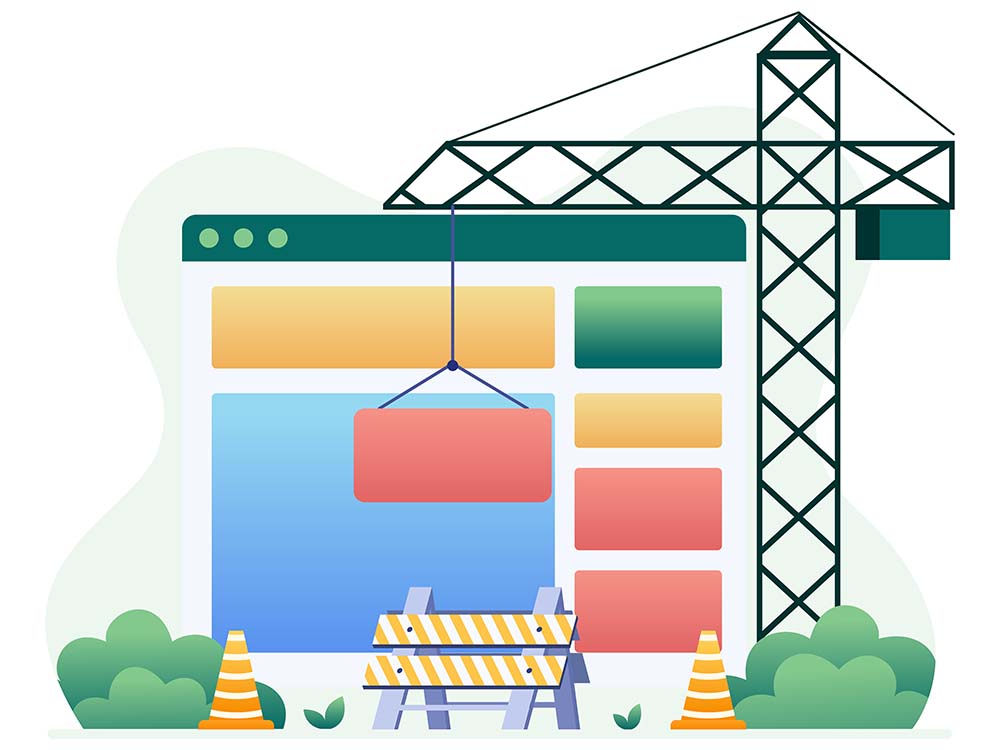
Your company’s culture is a big part of its selling power – people come to your store because they need something, but they come back because of your culture – and your online presence is an important extension of the culture your customers find in your brick and mortar stores. But a great online presence isn’t just for your customers. Your employees want to have confidence in sharing your website and social channels. Using those platforms to highlight your team and their unique value builds trust and intrinsic motivation, creating an even stronger culture while driving more brand loyalty in an ongoing upward cycle.
We sat down with our in-house experts, Michelle, our social media strategist, and Christina, our lead web developer, and asked them a few questions about how they see websites and Instagram improving company culture for their clients.
POSITIVE FEEDBACK AND WHAT MAKES PEOPLE CLICK
MMG: How do you use Instagram to help drive sales while creating an online culture that reflects the brick and mortar culture in a store?
Michelle: We’ve learned from the data that while people love sales, they also love choices, so when we post about a sale, we don’t focus on individual products, but we give an overview of the entire sale, and that’s what gets people to click. And I think this reflects the culture of our clients’ stores in that someone may go in, for one thing, thinking they’re trying to solve x problem in a certain way, but when they get in the store, there are so many options and the employees help them see a wider range of options. We work to reflect that in a social campaign as well.
A well-done Instagram isn’t going to suddenly change a store’s culture, but it’s a reciprocal thing – employees see themselves, and their store reflected on Instagram in a positive way, getting positive feedback from the world, and they want to live up to that, they want to create more of that.
MMG: How do you use social media to build brand awareness about culture?
Michelle: We start where our clients are. Different stores have different advantages to sharing their culture story online. We have one client whose store is in a tourist town, so they see more seasonal employees than some of our other clients. But a big part of their culture is being a part of that seasonal community, and we help them capitalize on that. What I’ve done to help create consistency for that brand is to focus on the town and use that town’s lingo and highlight the reasons people love coming there to visit – a favorite trail or birding place, different things that are specific to that area to create the story around this store’s unique locational culture.
We take the seasonality and build it into the culture as a positive. The store becomes an extension of the many reasons people are drawn to the town. This also gives the employees, even if they are only there for a few months during high seasons, a cultural foundation as well. There’s a bigger story that we can tell.
MMG: How important is communicating culture – what a company is about, not just what they sell – to creating brand loyalty and increasing sales?
Michelle: Our number one goal on social is to show that these companies are more than just hardware. For example, our local store here in Flagstaff gives so much money back to the community, and they weren’t telling that part of their story. They are so under the radar about that and about how well they treat their employees and the programs they’ve created to help their employees reach goals outside of their jobs.
We help them tell that story because people want to buy from a company that is doing good, not just in the world, but at home, right in their own stores. The value of communicating the why behind the hardware cannot be overstated.
MMG: What are the things that you’ve found that stand out to consumers about company culture?
Michelle: Seeing how a company helps its employees and the ways in which it gives back to the local community. One of our clients surveyed their employees about their personal goals outside of work, and the number one goal was to buy a house. Their leadership team researched organizations and training that could help and scheduled financial planning experts to come in and talk to employees and then be available afterward for continued help.
We encouraged this client to post about this because it’s important to consumers to know that by supporting the store, they are supporting every individual who works there, in a very tangible, financial way.
We have found too, that even the most simple photos about employees’ hobbies, or how they use some of the gear in the store; or tie-ins to the local pastimes, whether it’s a sports team, outdoor activities, a local town event; whatever is most important in that moment and most top of mind to the community, garner the most engagement. It resonated because people (both customers and employees) feel seen – it shows them you know who they are and what they are interested in.
MMG: What are the most important things that a well-designed website and social presence strategy tell consumers about a brand?
Michelle: The first thing is that they’re just with it. When you see a company that hasn’t posted since 2016, it shows in a way that they don’t care or don’t take the time, but if they do post, it builds confidence in the brand, which gives employees confidence in the company. It’s also really obvious when a company is or isn’t being authentic. Sometimes brands struggle with wanting to be like another brand because they see the success there, but we encourage our clients to be themselves because that builds trust and draws people in.
PRIDE, VALIDATION, AND CULTURE
MMG: In what ways have you noticed that the websites you build connect teams?
Christina: Testimonials are such a big part of the website that pertains to both employees and customers because it helps highlight what the team does. It shines a light on them, so they can be proud and connected to the main company culture, as well as giving them validation of their expertise and knowledge. It’s a really amazing way to have both employee and customer interaction points.
When a website shares images of employees doing something awesome with customers, that online user gets a picture of what their culture is – they feel like it’s helpful and kind and that they can go in and ask for what they need.
Chat features to talk directly to someone also helps the team interact with the community and help customers get what they need quickly. It plays into how you reflect your company culture onto the website and its functionality – people see that they can get questions answered quickly, helpful advice, and friendly service – the same as in your stores and it’s the same seamless process. The less friction someone feels on your website, the happier a customer feels afterward – online and in-store.
In a lot of ways, the website has more power because it’s often the first interaction a customer will have with your brand. Eighty-one percent of retail shoppers conduct online research before buying. If a company doesn’t reflect its culture and service on its website and social, then people will get the wrong impression before they even go into the store.
MMG: What tools do you use as a web developer to help your clients create content that not only drives customer engagement but employee engagement?
Christina: It goes back to what I was saying in the article about niche products. The question of why have a web development team build a website versus building it yourself on Squarespace or another platform. It’s the full picture that users get to experience, not just a billboard, but a functional company culture and user experience translated online.
A full web team focuses on where the customer is coming from, what they’ve seen so far, what they’re looking for, and helps guide them along the journey. We’re telling them over here is this information, and over here is this other information – just like they’d have in store.
We tailor that experience to what they’re looking for and guide them through the steps and get them where they need to be to have the information they want. This ties directly back to culture and why people spend their hard-earned money on your store versus someone else’s. It comes down to culture and user experience – along with SEO. Because no matter how great your online customer experience is, if they can’t find you, it doesn’t matter.
CONNECTING TO THE BIGGER VALUE
Whether customer or employee, building an optimized online presence where people can find you and engage with your company’s values and culture is a key component to improving not just your culture but the perception and visibility of that culture. Giving everyone a chance to feel valued and seen – whether it’s the employee review you posted or the timely image of inner tubing down a local river – both your customers and your team will feel connected to the bigger value of being a part of the local community and supporting your store.
Are you looking to improve company culture through improved social and website presence? Check out this great blog we wrote on How Hardware Stores Can Use Social Media for Engagement & Recruiting. Want to discuss social and website strategy in more detail? Click below to set up a meeting with Rand to learn more about how digital marketing with Mojo can boost your company’s morale!


Michelle has been with Mountain Mojo Group as the Lead Social Media Manager since 2020. Throughout her time here, she has led the efforts in social media, content writing, branding strategies, and graphic design for our clients in the Hardware Retail Industry.

Christina has been with Mountain Mojo Group as our lead web developer since 2020. She leads with five years of front-end web development and PPC advertising experience. Christina is a website UX/UI specialist and works directly with our Hardware Retail Industry clients to optimize their websites to meet the unique demand of their customer base.

